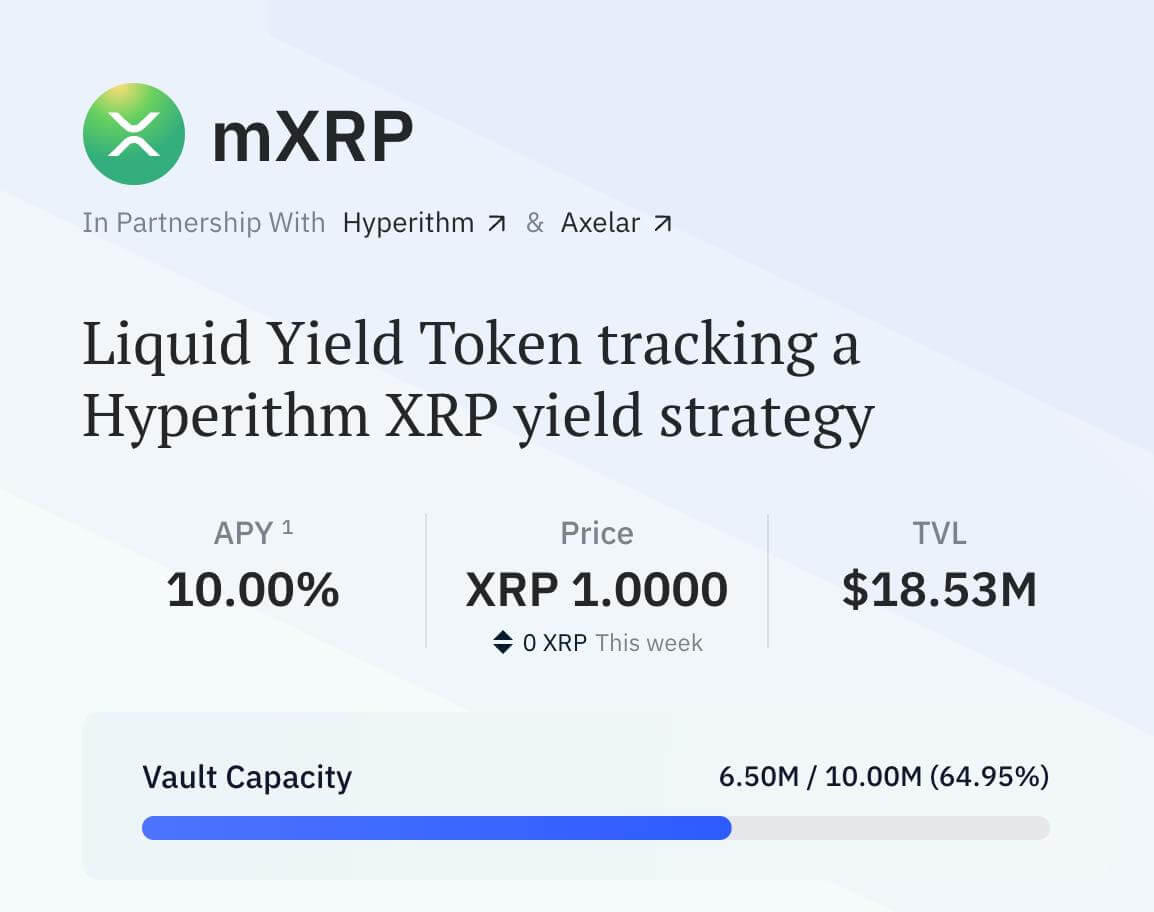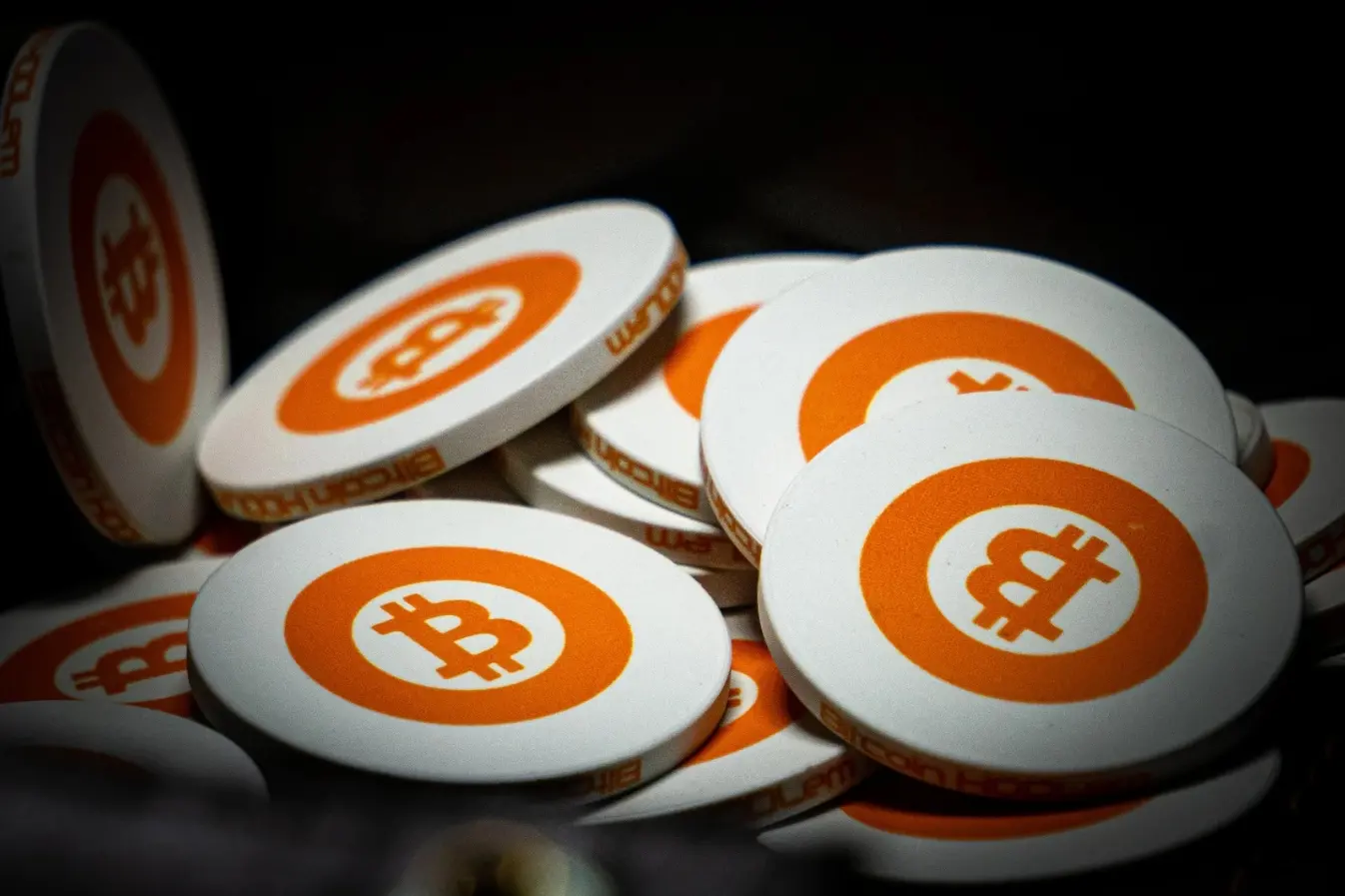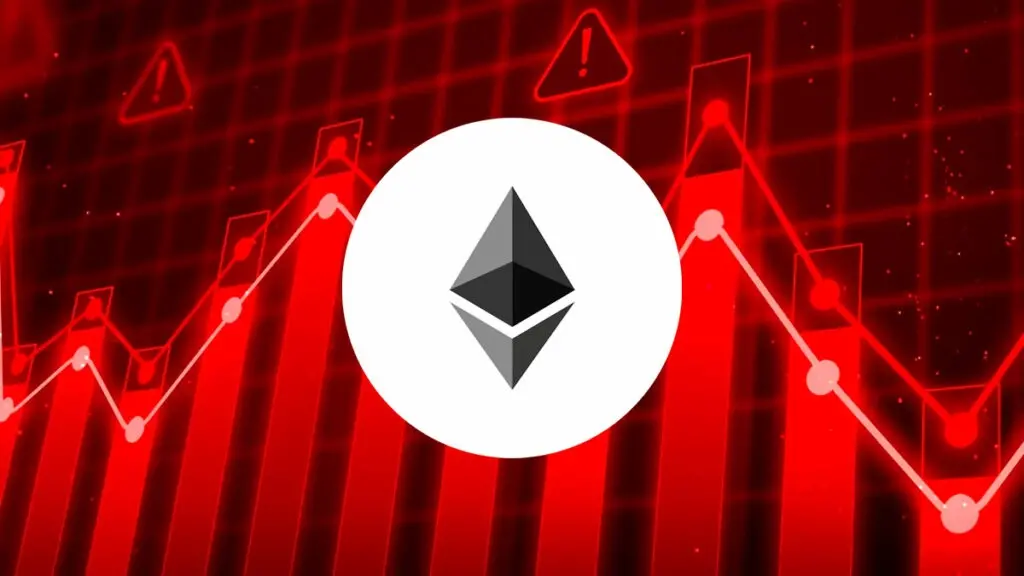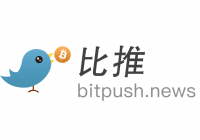XRP finds new life in DeFi with mXRP staking frenzy
XRP holders eager for yield opportunities have quickly embraced mXRP, the first liquid staking token native to the token’s ecosystem.
On Sept. 25, blockchain infrastructure provider Axelar revealed that the product’s initial vault of 6.5 million tokens filled within two days of launch, forcing it to raise the cap to 10 million.
Notably, the total value of assets locked in the vault amounts to nearly $20 million.

This swift expansion highlights pent-up demand from investors seeking to put dormant XRP to work through decentralized finance.
What is mXRP?
mXRP is designed to unlock fresh utility for XRP, which has remained idle for years despite being one of crypto’s oldest assets.
Built on the XRP Ledger’s Ethereum Virtual Machine (EVM) sidechain, the token allows users to stake XRP through Midas, a tokenization platform. In return, they receive a wrapped representation—mXRP—that can earn targeted annual yields of up to 8%.
The process begins when XRP is bridged to the sidechain and deposited into tokenized vaults. Those deposits are then allocated into yield strategies overseen by independent managers, known as “risk curators.”
At launch, Hyperithm took on that role, directing capital into market-making and liquidity provisioning activities.
The performance of these strategies flows back into the value of mXRP itself, ensuring that holders see returns directly in the token they own.
Midas co-founder and CEO Dennis Dinkelmeyer framed the initiative to mobilize long-dormant capital.
According to him:
“Much of the XRP supply has been dormant for years; mXRP provides a transparent mechanism for users to access onchain strategies.”
Expanding XRP’s role in DeFi
Meanwhile, the project reflects a broader movement to make XRP more versatile within decentralized markets.
XRP’s DeFi ecosystem pales significantly compared to rivals like Ethereum, which have hundreds of billions in total value locked.
Considering this, Sergey Gorbunov, co-founder of Axelar, emphasized that the protocol’s cross-chain framework allows XRP, which is traditionally confined to its own ledger, to interact with DeFi applications across multiple blockchains.
Notably, other initiatives are pushing in the same direction, evidenced by the recent launch of Flare Network’s FXRP.
FXRP allows XRP to be used in lending, liquidity pools, and other DeFi applications without sacrificing exposure to the underlying asset.
Disclaimer: The content of this article solely reflects the author's opinion and does not represent the platform in any capacity. This article is not intended to serve as a reference for making investment decisions.
You may also like
Boxing champion Andrew Tate's "Going to Zero": How did he lose $720,000 on Hyperliquid?
Andrew Tate hardly engages in risk management and tends to re-enter losing trades with higher leverage.

New Beginnings in the Darkest Hour: Is the Dawn of Bitcoin in 2026 Already Visible?
Risk assets are expected to perform strongly in 2026, and bitcoin is likely to strengthen as well.

Ethereum at a Crossroads: Quantum Threat Approaches, Wall Street Capital Exerts Dual Pressure
This battle between technology and human nature will determine whether Ethereum ultimately becomes the fintech backend for Wall Street or serves as the public infrastructure for digital civilization.

$1.3 million in 15 minutes, the ones who always profit are always them

